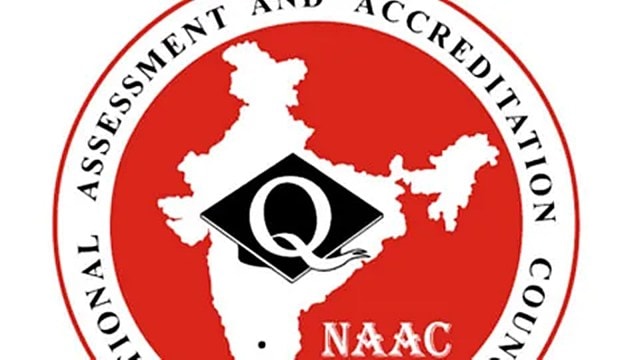
The recently proposed reforms at India’s National Assessment and Accreditation Council (NAAC) have been heralded as a watershed for the country’s sprawling higher education system, which counts over 45,000 colleges and nearly 1,100 universities, serving more than 40 million students as per All India Survey on Higher Education (AISHE) data (2021-22). As NAAC’s well-established but often-criticised system of letter grades is poised to give way to new digital dashboards, a binary “accredited/not accredited” classification, and a five-step maturity matrix, there is an optimistic air of modernisation. At first glance, minimising labour-intensive campus inspections with data-driven processes seems an obvious advance, promising greater objectivity and transparency. However, as the dust settles, it becomes clear that underneath these glitzy digital upgrades, the deeper flaws of Indian accreditation may well persist, if not intensify, unless reforms go beyond the surface.
Historically, NAAC’s grading system — A++, A+, B+, and so forth – has played a pivotal role in shaping student admissions, staff appointments and, crucially, determining the allocation of government funding. According to UGC reports, the stakes are enormous: In 2022, over 70 per cent of colleges and universities relied on NAAC accreditation to access various central and state government schemes. Even a single notch higher in NAAC ratings can yield crores in research funding, greater autonomy and a surge in student applications. Such high stakes breed perverse incentives. It isn’t surprising, then, that a burgeoning industry of consultants specialising in “Grade Optimisation” services has mushroomed, a phenomenon highlighted in a 2023 Education Ministry internal audit, which noted that nearly 60 per cent of accredited institutions had used external consultants for compliance documentation, leading to growing concerns that self-study reports have become polished brochures rather than honest reflections.
The new digital reforms, intended to sanitise the process by emphasising uploaded data, audited metrics and user-friendly dashboards, risk becoming a new arena for performative excellence rather than substantive change. Data laundering can be as insidious as staging a pre-inspection campus clean-up: For example, a 2022 study by the Centre for Policy Research found that 27 per cent of colleges reported inflated faculty research publications, while over 15 per cent admitted to embellishing “best practices” in their NAAC reports when surveyed anonymously. When the system’s rewards are tightly coupled with a handful of quantifiable indicators, such as student-teacher ratios, placement records, or research output, activities inevitably turn toward massaging the numbers. Switching to a binary “accredited/non-accredited” label or five-tier maturity scale may remove some ambiguity, but it remains susceptible to gaming, especially if monitoring and independent verification are weak.
Crucially, the proposal to reduce accreditation validity from five to three years is meant, in theory, to foster a culture of continuous improvement. However, there is a risk that this change will simply triple the bureaucratic burden. Faculty in India already spend substantial time on compliance: A 2021 NAAC survey noted that, on average, preparing for accreditation consumes 8-10 months of labour per cycle, diverting attention from research and teaching. With cycles now more frequent, paper (or digital) pushing may crowd out pedagogy. If the accreditors’ gaze becomes more relentless but not fundamentally more discerning, the core mission of educational excellence may recede further behind an ever-thickening curtain of compliance.
The human dimension is the crux of meaningful reform, yet India has consistently underestimated its importance. The so-called “peer reviewers” who form visiting teams are often chosen through obscure or politicised processes. Transparency International’s 2022 report on higher education notes that 21 per cent of institutions surveyed believed that accreditation outcomes could be influenced by favours or hospitality, a shameful open secret. By global best practices, peer review relies on independent, trained academics scrutinising institutions with integrity and deep professional commitment. In contrast, India’s system too often reduces assessment visits to rituals: Tea, tours, and testimonials, rather than rigorous, constructive critique. Digital platforms will not magically instil ethics or expertise. To fix the foundation, NAAC must invest in assembling a large, diverse, well-trained cadre of reviewers, free from conflicts of interest and subjected to robust oversight, including whistleblower mechanisms and periodic reviews themselves.
The essential function of accreditation, in its healthiest form, is not policing but professional development: It should provoke introspection, highlight strengths and gaps, and enable sustained progress. The best models, such as those of the European Quality Assurance Register (EQAR) or Singapore’s Committee for Private Education, blend self-assessment with external review, encourage faculty development, and create feedback loops that genuinely improve teaching, research, and student outcomes. Unfortunately, Indian accreditation too often encourages chasing metrics rather than meaning. The Higher Education Quality Council’s 2023 analysis underscored this, finding that while 93 per cent of accredited colleges improved on NAAC-mandated metrics, only 36 per cent showed convincing gains in student learning or faculty research output over five years.
To be fair, digital tools can aid in streamlining data collection and improving transparency, but they are no substitute for a culture grounded in trust, integrity, and aspiration. The government’s renewed efforts must reimagine NAAC not just as a gatekeeper, but as a mentor. This calls for serious investment in capacity building, radical transparency, and real accountability, for both reviewers and institutions, something dashboards alone cannot ensure.
As India aims for global academic stature, accreditation reform must rest on ethics, autonomy, and ambition. Technology may impress, but only a shift in institutional culture and incentives can turn superficial compliance into meaningful change. The real test for NAAC is not how efficiently it counts colleges, but whether it can inspire them to count for more.
The writer is former professor and dean, Christ University, Bengaluru